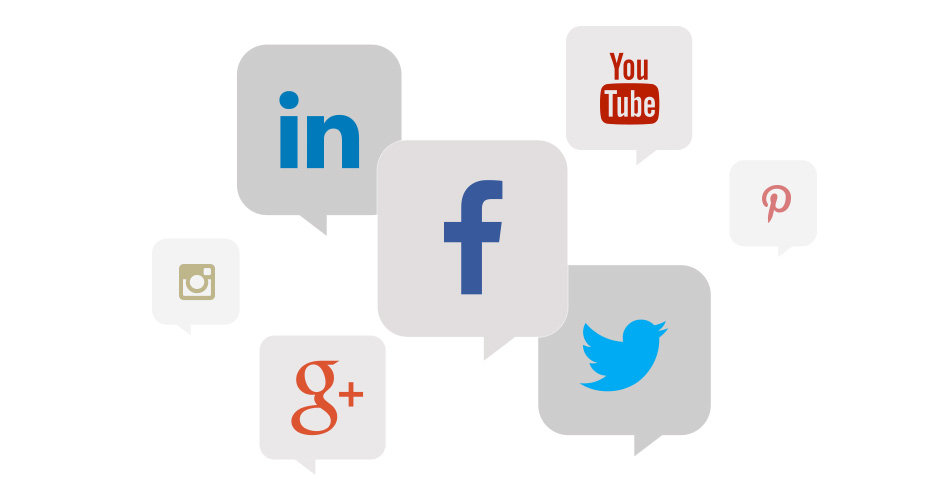Seizing the New Opportunities for Social Advertising
posted on

As little as five years ago, social media ads were a nonfactor in digital advertising, but with social media usage continuing to grow and social platforms refining their advertising options, social is becoming the hot place to be when marketing to specific audiences.
Social network ad spending is projected to reach almost $30 billion worldwide in 2016. More than two-thirds of that will be spent on Facebook ads, but other social platforms are starting to pull in significant ad revenue as well. Ads are expected to generate $2.6 billion this year for Twitter and just over $1 billion for LinkedIn. Snapchat, which began accepting ads in 2014, is reportedly aiming for $200 million in ad revenue for 2016. For Instagram and Pinterest, which both began accepting ads in 2015, $2.8 billion is the magic revenue number, which they are projected to hit in 2017 and 2018 respectively.
According to research conducted by marketing intelligence agency Mintel, men and women age 18-34 are the most likely to use social media to guide purchase decisions, with 21% of 18-34-year-old men saying they have clicked on a social ad and purchased a product. While just 9% of people on social media overall have done the same, 11% have purchased a product they saw advertised in a social ad even though they did not click the ad.
Ads on social media platforms have advantages over other types of digital ads, including:
Interest Targeting. Rather than targeting users based on their internet searches, the huge amount of user data collected by social media platforms lets you target users that might be receptive to your product or service even before they’ve thought to search for it. Social lets you target potential new customers based on geographical and demographic data, as well as more personal factors such as interests, activities, social connections, and purchase behaviors. Using lookalike targeting, offered by Facebook and LinkedIn, you can even reach new users based on their similarities to your known audiences.
Conversion Tracking. You can still use pay-per-click to track the ROI of your social ad campaign, but social networks including Facebook and Twitter also allow you to track conversions from your ad, though you’ll need to add some code to your website’s conversion landing page.
Access to Mobile Users. Overall internet usage is already higher on mobile than on desktop, and for social it’s higher still, so ads placed on social networks have a better chance of reaching more mobile users. For Twitter, mobile ads accounted for 88% of total advertising revenue in Q1 2016, and Instagram expects to bring in $1.5 million in mobile ad revenue this year.
Higher Engagement. Social ads, with their ability to better align with user interests, are showing significantly higher rates of engagement than their banner ad ancestors. On Twitter, promoted tweets show engagement rates of 1-3%, compared to the average .06% click-through rate of display ads. Facebook’s ads show a click-through rate eight times higher than normal web ads. For mobile, it’s nine times higher.
Social Media Advertising Tips
Every social media network has its own audience, personality, tools, and best practices. Here are a few important things to know about the major players in social advertising.
Facebook: Use a CTA. It doesn’t cost extra, and a call to action button (you can choose from Shop Now, Book Now, Learn More, Sign Up and Download) generates a click-through rate that is 2.85 times higher than an ad without a CTA. Shop Now is the most popular button, used 74% of the time, but the most effective is Learn More, used in only 10% of CTA ads.
Twitter: Add an image or video to your promoted tweet. According to Twitter, tweets with images or videos see 300% more engagement than text-only tweets.
Pinterest: Don't count men out! According to comScore, 71% of Pinterest's 72.5 million users are women, but 33% of new Pinterest signups are men. And 93% of all members use Pinterest to plan purchases.
LinkedIn: Consider using a sponsored update, LinkedIn’s native ad option, rather than an ad. Because they show up in the newsfeed rather than in the right-hand column, they are more likely to be seen, and therefore show better conversion rates.
Social media advertising is becoming a real driver of leads and sales, and can be a valuable supplement to your marketing strategy. Web Solutions can help you determine which channels are appropriate for your business and craft a social advertising strategy that will grow your business and complement your overall marketing plan.